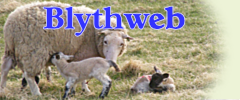The Walberswick Enigma - Artists Inspired by the Blyth Estuary
Walberswick and the Blyth Valley have attracted artists for nearly two centuries. The visits of PHILIP WILSON STEER and CHARLES RENNIE MACKINTOSH are now common knowledge, but a great many other major artists worked in the area.
Blythburgh, too, had its artist residents: ERNEST CROFTS RA, SIR JOHN SEYMOUR LUCAS RA, and WILLIAM BENNER all had homes in the village.
In the early nineteenth century CORNELIUS VARLEY and PETER DE WINT, both prominent water-colourists, made studies of Walberswick church, while in the 1860s and 1870s CHARLES KEENE, very highly regarded in his day, produced drawings and etchings of riverside subjects.
The mid–1880s saw a substantial influx of young artists, mainly Paris-trained, who later became very prominent: many had also spent time in the burgeoning artist colonies in Brittany and Cornwall. Perhaps the best–known of the ‘new wave’ was Steer, but other notable visitors of the period included FREDERICK BROWN, Slade Professor for many years; SIR FRANK SHORT, Head of the School of Engraving at the RCA, and the Irish Academicians WALTER OSBORNE, NATHANIEL HILL and AUGUSTUS BURKE.
Blythburgh Society - The History Notes: The Walberswick Enigma. Artists inspired by the Blyth Estuary
Between the wars the arrival of distinguished artists continued unabated. These included Royal Academicians SIR ARNESBY BROWN, SIR GEORGE CLAUSEN, R. O. DUNLOP and BERTRAM PRIESTMAN. More permanently domiciled in the village were W. F. CRITTALL, ALLAN DAVIDSON and TOM VAN OSS.
Since World War 2, artists with homes in Walberswick have included CLIFFORD RUSSELL, ERIC SCOTT, CHRIS and WENDY SINCLAIR, SIDNEY SEYMOUR LUCAS and WILLIAM BOWYER RA, while visitors have included BERNARD DUNSTAN RA, SIR WILLIAM COLDSTREAM and F. W. BALDWIN. These are merely the tip of a huge iceberg - the list seems endless.
The attraction defies clear analysis, but must involve elemental considerations: water, air, light and space, combined with a compellingly haunting atmosphere.
R. R. Scott, Walberswick, October 1995.
Back to the History Index
Some Favourite Websites For April 2025:
Waveney Wholesale – Suppliers of toys, novelties, giftware, china, housewares, pet items, beach goods and so much more
Established Halesworth-based suppliers with over 3000 lines stocked. On-line ordering or call and collect.
Walberswick Ferry – Offering river trips as well as special occassion bookings
Climb aboard the launch Daybreeze and follow the River Blyth towards Blythburgh through Walberswick Nature Reserve - an Area of Outstanding National Beauty.
George Borrow Trust – Explore about the well travelled 1800s poet George Borrow
The George Borrow Trust aims to advance the education of the public in the life and works of George Borrow in particular, by means which preserve, exhibit and study his writings and works and other material objects connected with or tending to perpetuate his memory or to throw light on his life and work.
Andy Seedhouse Boats – Andy Seedhouse Boats, Woodbridge - Boat Sales
A friendly and professional family-run business with an old-fashioned approach to customer service, located on the picturesque waterfront at Woodbridge on the River Deben. From dinghies and day boats to fishing boats and yachts, and even including liveaboard boats too, Andy brings his many years of experience in helping his customers buy and sell. Also chandlery, trailers, etc.
Stoneware Birds – Life-sized handmade and unique British birds, now available to buy online.
A charming unique gift or a treat for oneself. See the website to know how each one is made. Now available to buy online. Each bird is an individual creation, varying in choice from the perky wren to the plump bullfinch together with other well-loved British birds. Which will you choose?
